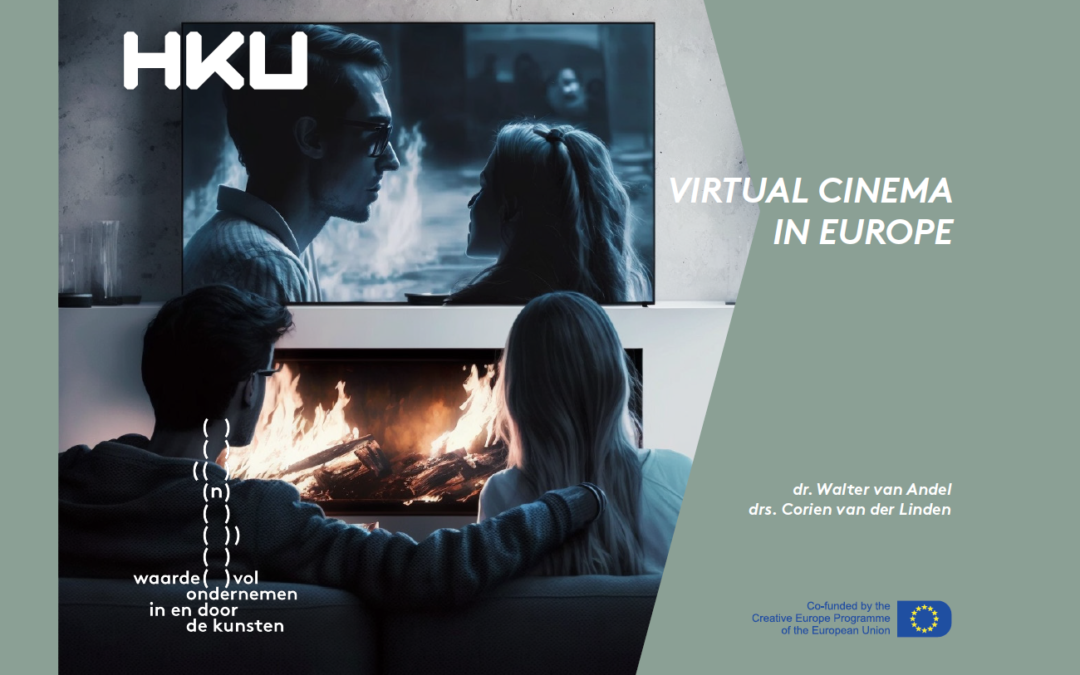Virtual Cinema, the online film distribution model in which content is offered in collaboration with local cinemas, creates many opportunities for both European cinemas and distributors. That is what a recent study, initiated by virtual cinema pioneer Picl and Medialoc, specialist in digital technological solutions, shows.
In 2022, the two companies joined forces under the name REACH’M, with the support of the Creative Europe MEDIA program. The primary objective is to bolster the European arthouse cinema industry by expanding the reach of the new hybrid consumer through virtual cinema. In September 2022, REACH’M initiated a study aimed at comprehending the strategies employed by cinemas and distributors in shaping their virtual cinema business models. The study sought to uncover their experiences, identify obstacles encountered, and explore opportunities perceived for the future of virtual cinema.
The first takeaways of the study were presented at the Europa Cinemas Exhibitors’ Meeting in Cannes. REACH’M has now published the full report of the research, in which a total of 77 cinemas and 52 distributors from 25 different European countries took part. The quantitative and qualitative study was conducted by Dr. Walter van Andel, Lector Creative Business Models, and Drs. Corien van der Linden, at the University of the Arts Utrecht (HKU) and distributed among the members of network organisations Europa Cinemas and Europa Distribution. Of the 129 respondents, 62 already offer some form of virtual cinema.
“In the past years, there have been many developments in the field of virtual cinema“, Noortje van de Sande (Picl) says. ”Fuelled by the lockdowns that made new forms of reaching audiences inevitable, as well as rapidly increasing technical capabilities, there have been many new initiatives in this field. Some more successful than others. We now thought it was time to evaluate, share our know-how and look forward to what’s next. The feedback and insights provided by both distributors and cinemas on their experiences with Virtual Cinema and thoughts on this matter are extremely valuable.”
Fatima Djoumer, CEO of Europa Cinemas, added: “Europa Cinemas was very pleased to cooperate with PICL to produce this study, which will provide members of our network and film professionals more widely with an overview of the status of virtual cinema in Europe. We hope that these key learnings will benefit the development of innovative initiatives to attract those hybrid audiences back to cinemas, particularly younger ones.”
The study shows that European cinemas as well as distributors see opportunities in virtual cinema.
Mainly, the study concludes:
- The biggest added value of virtual cinema lies in:
– The opportunity to offer a broader range of programming
– Providing an additional service to the customers
– Gathering data and insights - In order to really be of value for audiences and the industry in general, knowledge on certain specific areas need to be developed and shared. In particular, there seems to be a dire need for more and innovative knowledge on issues concerning the virtual cinema business.
- The respondents voiced a clear need to have a better understanding of the possibilities of utilizing the data that is generated through an online viewing service. Issues of data management, big data and how to generate actionable consumer insights are for many players in this field not something they can tackle with their often-limited resources.
- The solution for a good and viable business model in this field is not singular. It is evident that each situation, each country or region asks for its own answer that adheres to the particularities of each market, legislative reality and to the personal ambitions of the involved organizations.
“We need to anticipate the future of online and hybrid screening,” Frank van der Horst (Medialoc) underlines. “To continue contributing to the changing needs of audiences and thus the reach of European arthouse film, exploring and experimenting is essential. We need to continuously be thinking ahead to create a future-proof and competitive environment for European cinemas en films.”
“The position of European arthouse cinemas, both as a curator as well as an interactive meeting space, has always been key in our work,” Anke van Diejen (Picl) explains. “We have always seen the opportunities for virtual cinema as a way to expand to a rapidly growing hybrid audience, but after Covid the tendency was ‘bums on seats’. This results gives us the confidence that cinemas as well as distributors are looking towards the long term as it comes to content strategy and hybrid audience reach. But there is a lack of shared learnings when it comes to business modelling and marketing knowhow for hybrid distribution. With REACH’M we aim to tap into the need for individual approaches for different types of content and countries, by using the experience and learnings both Picl and Medialoc have gathered over the years.”
The full report of the research can be found here.

